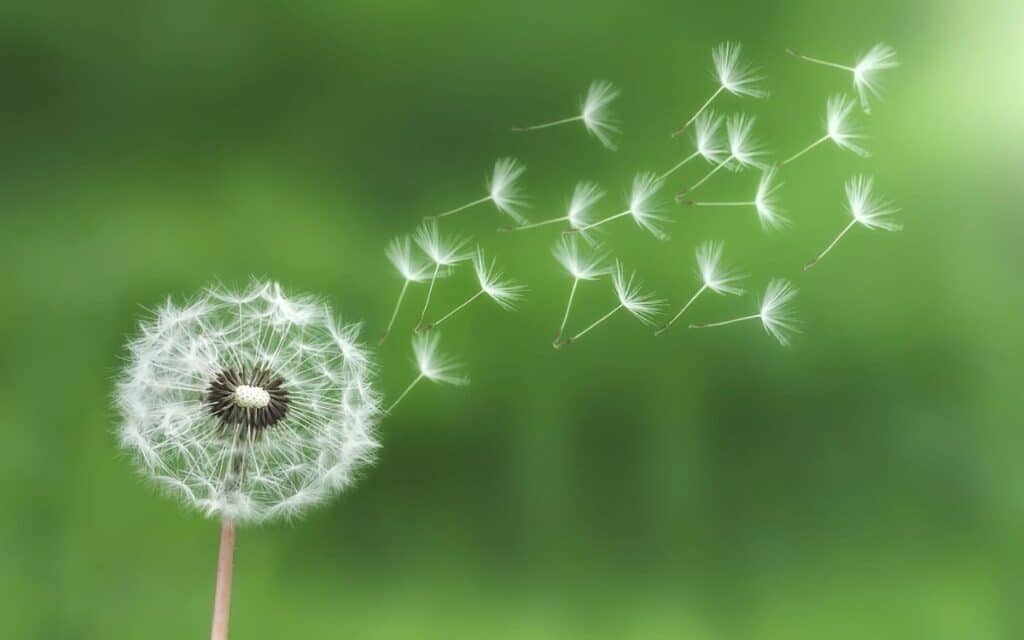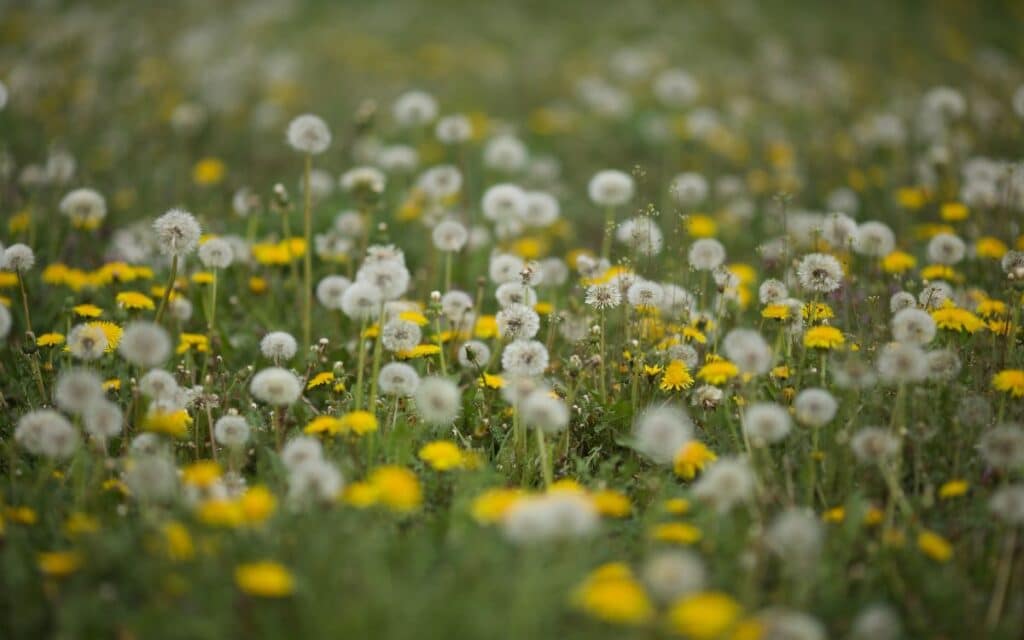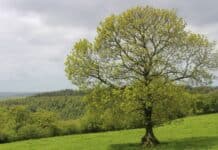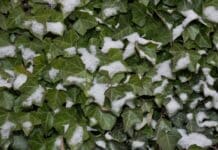Dandelions have a long history of association with folklore and superstition in British culture. Here are some of the most common beliefs and traditions.

- Dandelions as symbols of wishes: In many cultures, dandelions are associated with wishes and good luck. Children often make wishes by blowing the seeds from the flower head, believing that each seed represents a wish that will come true.
- Dandelions as predictors of weather: In British folklore, the number of seeds in a dandelion clock (the round seed head) was said to indicate the time of day. If the seeds are tightly packed, it’s supposed to indicate good weather, while a fluffy head with many seeds was a sign of rain.
- Dandelions as harbingers of spring: Dandelions are one of the first flowers to bloom in spring, making them a symbol of new beginnings and the arrival of warm weather.
- Dandelions as medicinal plants: Throughout history, dandelions have been used for their medicinal properties, with roots, leaves, and flowers all used to treat various ailments. In folklore, dandelions were believed to have the power to cure everything from digestive problems to skin diseases.
- Dandelions as symbols of love: In some cultures, dandelions are associated with love and romance. For example, in England, it was said that if you gave a loved one a dandelion, they would always be faithful to you.
These are just a few of the many superstitions and beliefs that have been associated with dandelions over the years in British folklore. Despite their reputation as a common weed, dandelions have held a special place in the hearts of people for centuries.

How to use Dandelions in Magic
In British folklore, dandelions, along with other common garden plants, have been used in various magical practices and rituals. Here are some traditional uses of dandelions in magic:
- Love spells: Dandelions were often used in love spells, such as picking the flowers and making a wish while blowing the seeds into the air. Alternatively, you could write a love spell on a piece of paper, wrap it around a dandelion stem, and then blow the seeds into the wind, believing that the spell will be carried to your intended target.
- Divination: Dandelions have been used as a tool for divination, such as counting the number of seeds in a dandelion clock and interpreting the result as a sign from the universe.
- Healing spells: Dandelions were believed to have healing properties and were used in spells to cure various ailments, such as making a tea from the leaves and drinking it to treat digestive problems.
- Protection spells: Dandelions were often used in protection spells, such as placing a dandelion under your pillow to ward off evil spirits or carrying a dandelion in your pocket to keep yourself safe from harm.
- Wishing spells: As mentioned earlier, dandelions were associated with wishes and good luck, and were often used in wishing spells, such as making a wish while blowing the seeds from a dandelion clock.
You can buy Dandelion tea on Amazon, but you can also make your own.
How to make Dandelion tea
Here is a simple recipe for making dandelion tea:
Dandelion Tea Ingredients
- 1 cup of fresh dandelion leaves and flowers
- 2 cups of water
- Honey or lemon (optional)
Instructions
- Wash the dandelion leaves and flowers thoroughly to remove any dirt or debris.
- Bring the water to a boil in a saucepan.
- Add the dandelion leaves and flowers to the boiling water and let them simmer for about 10 minutes.
- Remove the saucepan from heat and let the tea steep for an additional 5 minutes.
- Strain the tea into a mug, discarding the solids.
- Add honey or lemon to taste, if desired.
- Enjoy your dandelion tea while it’s still warm.
Please be aware that you should only use dandelions that have been harvested from a safe and pesticide-free location, as dandelions can absorb chemicals from the environment.
Do you use dandelions? Tell us about it in the comments section below!







